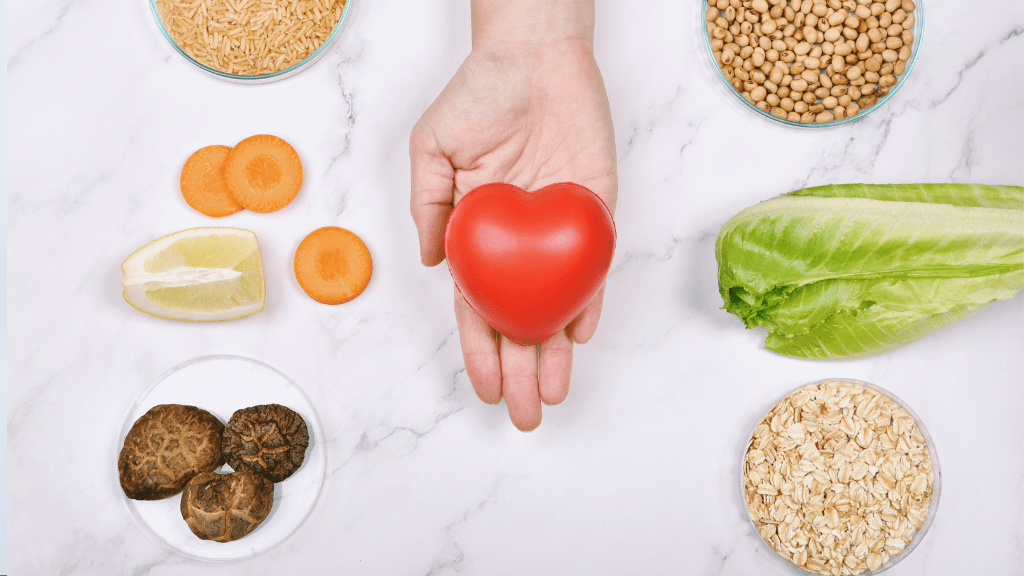The Connection Between High-Fiber Vegetables and a Healthy Gut Microbiome
The gut microbiome, a complex community of trillions of microorganisms residing in our digestive tract, plays a crucial role in maintaining overall health. These microorganisms, including bacteria, viruses, fungi, and other microbes, are essential for various bodily functions such as digestion, immune system support, and even mental health. Diet significantly influences the composition and diversity of the gut microbiome, with high-fiber vegetables being particularly beneficial. Understanding how high-fiber vegetables contribute to a healthy gut microbiome can help you make informed dietary choices that support long-term health and well-being.
What is the Gut Microbiome?
The gut microbiome refers to the vast ecosystem of microorganisms that inhabit the gastrointestinal (GI) tract. These microbes interact with the human body in various ways, assisting in digestion, producing essential nutrients, and protecting against harmful pathogens. A healthy gut microbiome is diverse and balanced, with a wide variety of beneficial bacteria that help maintain optimal health.
However, an imbalance in the gut microbiome, known as dysbiosis, can lead to various health issues, including digestive disorders, weakened immunity, and even mental health problems like anxiety and depression. Diet is one of the most important factors influencing the gut microbiome, with fiber playing a pivotal role.
The Role of Fiber in Gut Health
Dietary fiber, found in plant-based foods like fruits, vegetables, whole grains, and legumes, is a type of carbohydrate that the human body cannot fully digest. Instead of being broken down by human digestive enzymes, fiber passes through the digestive tract largely intact until it reaches the colon. Here, it becomes a food source for the beneficial bacteria residing in the gut.
There are two main types of dietary fiber: soluble and insoluble. Both types are essential for gut health, but they work in different ways:
-
Soluble Fiber: Dissolves in water to form a gel-like substance in the gut. This type of fiber is particularly beneficial for gut bacteria because it can be fermented by the microbes, producing short-chain fatty acids (SCFAs) like butyrate, acetate, and propionate. SCFAs are vital for maintaining the integrity of the gut lining, reducing inflammation, and supporting overall digestive health.
-
Insoluble Fiber:Does not dissolve in water and adds bulk to the stool, promoting regular bowel movements. While it is less fermentable than soluble fiber, insoluble fiber still plays a role in gut health by promoting gut motility and preventing constipation.
High-fiber vegetables are rich in both soluble and insoluble fiber, making them essential for a healthy gut microbiome.
How High-Fiber Vegetables Support the Gut Microbiome
High-fiber vegetables offer numerous benefits for the gut microbiome, contributing to the diversity and balance of beneficial bacteria. Here’s how:
1. Feeding Beneficial Gut Bacteria
The primary way high-fiber vegetables support the gut microbiome is by acting as a food source for beneficial bacteria. As these bacteria ferment dietary fiber, they produce SCFAs, which provide energy for colon cells, reduce gut inflammation, and protect against colon cancer. Vegetables like asparagus, artichokes, and onions are particularly rich in soluble fiber and act as prebiotics, feeding the good bacteria in the gut.
2. Enhancing Gut Barrier Function
The gut barrier is a critical defense system that prevents harmful substances from entering the bloodstream while allowing nutrients to pass through. SCFAs, produced by the fermentation of soluble fiber, strengthen the gut barrier by promoting the production of mucus and tight junction proteins. This helps prevent leaky gut syndrome, a condition where the gut barrier becomes permeable, allowing toxins and pathogens to enter the bloodstream and trigger inflammation.
3. Reducing Inflammation
Chronic inflammation in the gut is linked to various health issues, including inflammatory bowel disease (IBD), obesity, and metabolic syndrome. High-fiber vegetables help reduce inflammation by promoting the growth of anti-inflammatory bacteria and increasing the production of SCFAs. For example, the fiber in Brussels sprouts, broccoli, and kale can help modulate the immune response and reduce gut inflammation.
4. Promoting Bacterial Diversity
A diverse gut microbiome is associated with better health outcomes, including improved digestion, enhanced immune function, and a lower risk of chronic diseases. High-fiber vegetables contribute to bacterial diversity by providing a range of fibers that different bacteria can ferment. Vegetables like carrots, beets, and spinach contain a mix of soluble and insoluble fibers, which support a diverse population of gut bacteria.
5. Supporting Regular Bowel Movements
Regular bowel movements are essential for gut health, as they help eliminate waste and prevent the buildup of harmful substances in the colon. Insoluble fiber in high-fiber vegetables adds bulk to the stool and promotes regularity, reducing the risk of constipation and associated digestive issues. Vegetables like cabbage, cauliflower, and green beans are excellent sources of insoluble fiber that support gut motility.
Best High-Fiber Vegetables for a Healthy Gut Microbiome
While most vegetables are beneficial for gut health, certain high-fiber vegetables are particularly effective at supporting a healthy gut microbiome. Here are some of the best options:
-
Artichokes: Rich in inulin, a type of soluble fiber that acts as a prebiotic, feeding beneficial gut bacteria and promoting the production of SCFAs.
-
Asparagus: Contains both soluble and insoluble fiber, supporting gut bacteria diversity and promoting regular bowel movements.
-
Broccoli: High in fiber and antioxidants, broccoli supports gut health by reducing inflammation and promoting the growth of beneficial bacteria.
-
Brussels Sprouts: These vegetables are rich in soluble fiber, which helps to reduce gut inflammation and support a healthy gut barrier.
-
Carrots: A good source of both soluble and insoluble fiber, carrots support gut motility and feed beneficial bacteria.
-
Spinach:Contains a mix of fibers that promote bacterial diversity and support overall gut health.
-
Onions:High in inulin and other prebiotics, onions are excellent for feeding beneficial bacteria and promoting SCFA production.
Tips for Incorporating High-Fiber Vegetables into Your Diet
To maximize the benefits of high-fiber vegetables for your gut microbiome, consider the following tips:
1. Start Slowly: If you're not used to eating a lot of fiber, introduce high-fiber vegetables gradually to avoid digestive discomfort. This allows your gut bacteria time to adjust to the increased fiber intake.
2. Eat a Variety: Incorporate a wide range of high-fiber vegetables into your diet to support bacterial diversity. Different vegetables provide different types of fiber, which feed various beneficial bacteria.
3. Cook Smart: Some people find that cooking vegetables makes them easier to digest. Steaming, roasting, or sautéing high-fiber vegetables can help break down some of the fiber, making it gentler on your digestive system.
4. Stay Hydrated: Drinking plenty of water is important when increasing fiber intake, as fiber absorbs water in the gut. Adequate hydration helps prevent constipation and supports healthy digestion.
5. Pair with Probiotics: Probiotic-rich foods like yogurt, kefir, and fermented vegetables can complement the benefits of high-fiber vegetables by introducing beneficial bacteria into the gut. Pairing these with high-fiber vegetables can enhance overall gut health.
FAQs About
1. How do high-fiber vegetables benefit the gut microbiome?
-
Answer: High-fiber vegetables benefit the gut microbiome by serving as a food source for beneficial bacteria. The fiber in these vegetables is fermented by gut bacteria, producing short-chain fatty acids (SCFAs) that support gut health by reducing inflammation, enhancing gut barrier function, and promoting the growth of beneficial bacteria.
2. What types of fiber are found in high-fiber vegetables, and how do they affect the gut?
-
Answer: High-fiber vegetables contain both soluble and insoluble fiber. Soluble fiber dissolves in water and is fermented by gut bacteria, producing SCFAs that support gut health. Insoluble fiber adds bulk to stool and promotes regular bowel movements. Both types of fiber are important for maintaining a healthy and diverse gut microbiome.
3. Can eating high-fiber vegetables improve gut health for everyone?
-
Answer: While high-fiber vegetables generally promote gut health, individual responses can vary. Some people with sensitive digestive systems or conditions like IBS may need to introduce fiber gradually to avoid discomfort. It's important to listen to your body and adjust fiber intake based on your personal tolerance and digestive health needs.
4. Which high-fiber vegetables are particularly good for the gut microbiome?
-
Answer: Vegetables rich in soluble fiber, such as artichokes, asparagus, onions, and carrots, are particularly beneficial for the gut microbiome. These vegetables act as prebiotics, feeding beneficial bacteria and promoting the production of SCFAs. Incorporating a variety of these vegetables can support a healthy and diverse gut microbiome.
5. How can I incorporate more high-fiber vegetables into my diet to support my gut microbiome?
-
Answer: To incorporate more high-fiber vegetables into your diet, start by adding small portions and gradually increasing the amount to allow your digestive system to adjust. Focus on eating a variety of vegetables, and consider cooking them to make them easier to digest. Pairing high-fiber vegetables with probiotic-rich foods can further enhance gut health.
Conclusion
High-fiber vegetables play a crucial role in supporting a healthy gut microbiome by feeding beneficial bacteria, promoting bacterial diversity, and enhancing gut barrier function. Incorporating a variety of these vegetables into your diet can lead to improved digestion, reduced inflammation, and better overall health. As always, it’s important to listen to your body and make dietary adjustments that work for you. By prioritizing high-fiber vegetables, you can take significant steps toward maintaining a healthy gut microbiome and enjoying the associated health benefits.




